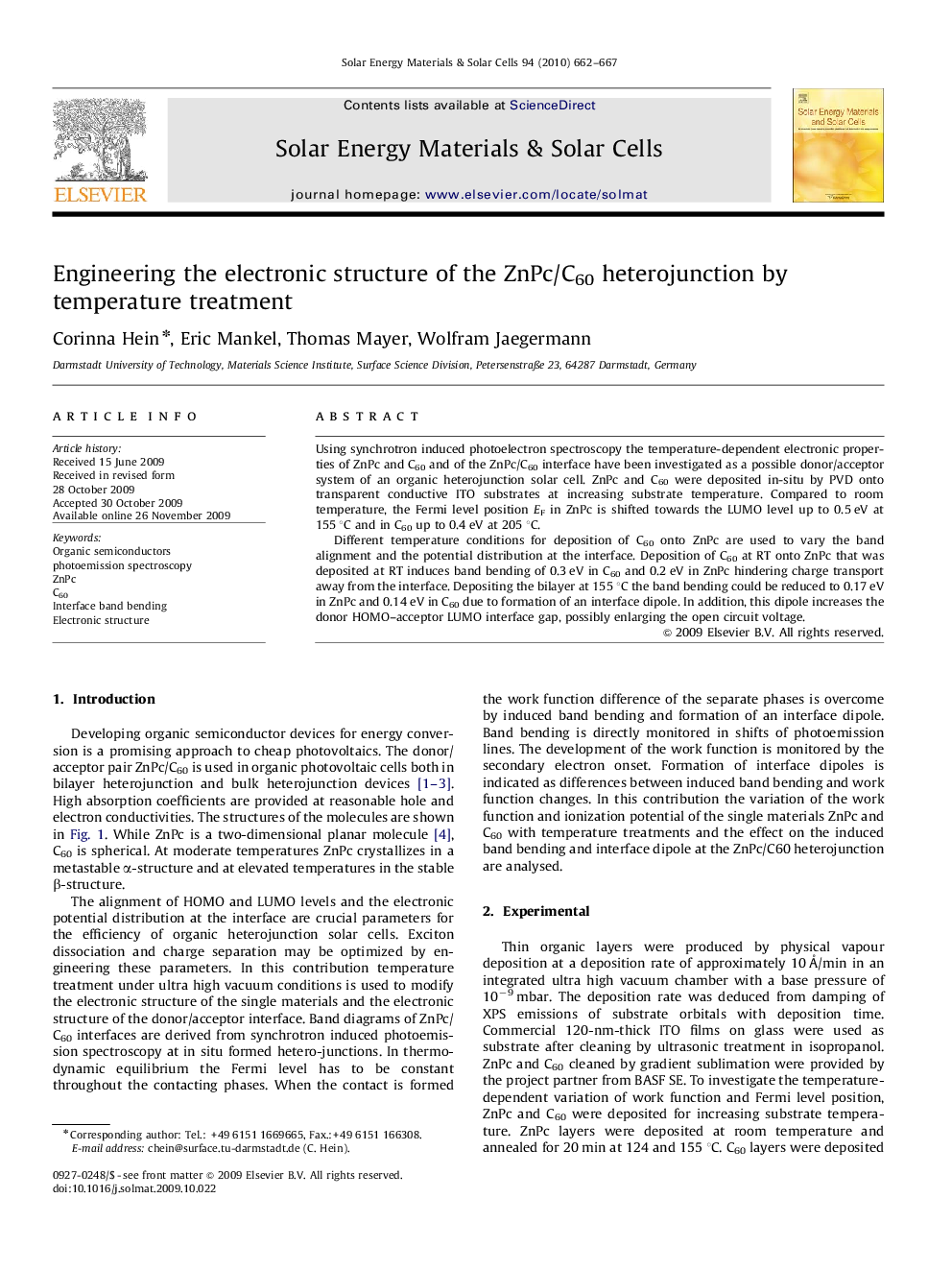| Article ID | Journal | Published Year | Pages | File Type |
|---|---|---|---|---|
| 80198 | Solar Energy Materials and Solar Cells | 2010 | 6 Pages |
Using synchrotron induced photoelectron spectroscopy the temperature-dependent electronic properties of ZnPc and C60 and of the ZnPc/C60 interface have been investigated as a possible donor/acceptor system of an organic heterojunction solar cell. ZnPc and C60 were deposited in-situ by PVD onto transparent conductive ITO substrates at increasing substrate temperature. Compared to room temperature, the Fermi level position EF in ZnPc is shifted towards the LUMO level up to 0.5 eV at 155 °C and in C60 up to 0.4 eV at 205 °C.Different temperature conditions for deposition of C60 onto ZnPc are used to vary the band alignment and the potential distribution at the interface. Deposition of C60 at RT onto ZnPc that was deposited at RT induces band bending of 0.3 eV in C60 and 0.2 eV in ZnPc hindering charge transport away from the interface. Depositing the bilayer at 155 °C the band bending could be reduced to 0.17 eV in ZnPc and 0.14 eV in C60 due to formation of an interface dipole. In addition, this dipole increases the donor HOMO–acceptor LUMO interface gap, possibly enlarging the open circuit voltage.
